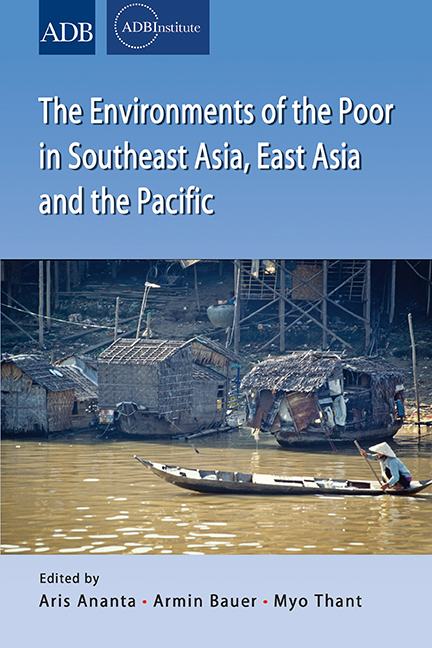Book contents
- Frontmatter
- Contents
- Preface
- List of Contributors
- Part I OVERVIEW
- Part II EAST ASIA (People's Republic of China and Republic of Korea)
- Part III PACIFIC ISLANDS
- 7 Climate Change Adaptation and Poverty Reduction in Small Islands of the Pacific
- 8 The Role of Development Organizations in Pro-Poor Adaptation to Global Warming in the Pacific Islands
- Part IV MAINLAND SOUTHEAST ASIA (Cambodia, Thailand, Vietnam)
- Part V ARCHIPELAGIC SOUTHEAST ASIA (Indonesia, Malaysia, Philippines)
8 - The Role of Development Organizations in Pro-Poor Adaptation to Global Warming in the Pacific Islands
from Part III - PACIFIC ISLANDS
Published online by Cambridge University Press: 21 October 2015
- Frontmatter
- Contents
- Preface
- List of Contributors
- Part I OVERVIEW
- Part II EAST ASIA (People's Republic of China and Republic of Korea)
- Part III PACIFIC ISLANDS
- 7 Climate Change Adaptation and Poverty Reduction in Small Islands of the Pacific
- 8 The Role of Development Organizations in Pro-Poor Adaptation to Global Warming in the Pacific Islands
- Part IV MAINLAND SOUTHEAST ASIA (Cambodia, Thailand, Vietnam)
- Part V ARCHIPELAGIC SOUTHEAST ASIA (Indonesia, Malaysia, Philippines)
Summary
The main subject of this chapter is the what role, if any, development organizations should play in helping the poor in the developing countries of the Pacific Islands adapt to what is commonly called climate change. I first clarify what is meant by climate change. I then explain how in the absence of strong governments in these countries, development organizations do and can provide help to the poor in adapting to the changes taking place in their environments. I then explain how these organizations often appropriately use an area approach, one that means excluding some normally targeted people (the poor) and including some normally not-targeted people (the better off). And I try to give the reader a good brief understanding of what the Pacific Islands is, and how the area approach applies to it. I then present two ways the development organizations may succeed in getting better local support for environmental projects than governments have in the past. First, projects that seek to solve long-term problems that local people may not appreciate can be combined with elements that solve more obvious and immediate needs. It will be easier to come up with such projects if global warming is not considered separately from other environmental problems. I present a sketch of the sort of comprehensive classification scheme that would aid such a plan. Second, steps can be taken to make people more aware of the long-term problems, such as sea-level rise. But development organizations should first improve their own intellectual content and to coordinate their activities with each other.
GLOBAL WARMING AND ITS EFFECTS
Anything made of molecules, atoms, and particles emits self-propagating coupled electrical and magnetic waves that move at the speed of light (when in a vacuum). The higher the temperature of a thing, the higher the frequency of its waves and the greater the energy they carry. The spectrum ranges from radio waves, with the lowest frequency and energy, through microwaves, infrared, visible, ultraviolet, and X-rays, to gamma rays, with highest frequency and energy.
- Type
- Chapter
- Information
- Publisher: ISEAS–Yusof Ishak InstitutePrint publication year: 2013

